Missouri’s opioid epidemic hits African Americans hardest — especially in St. Louis
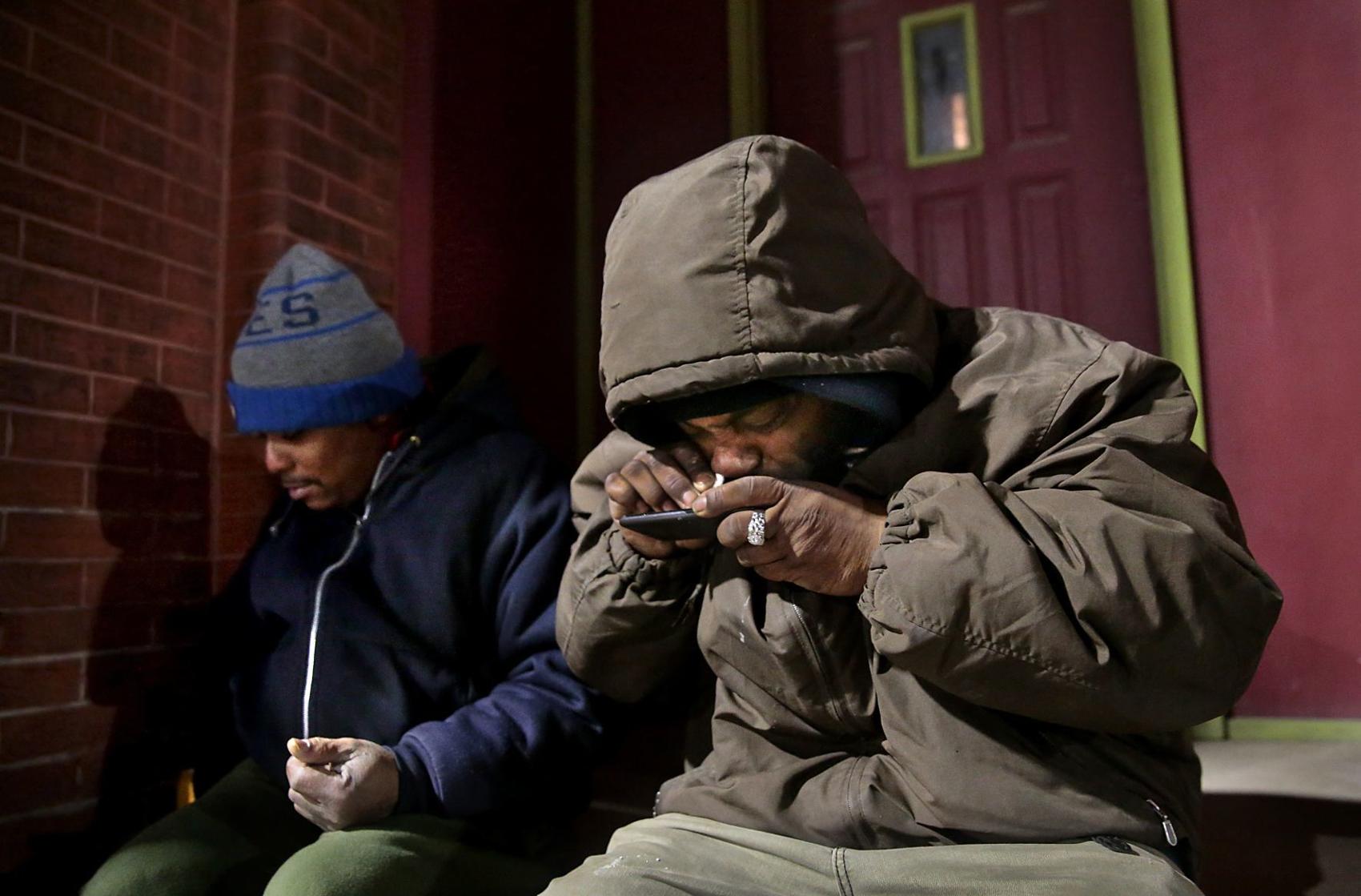
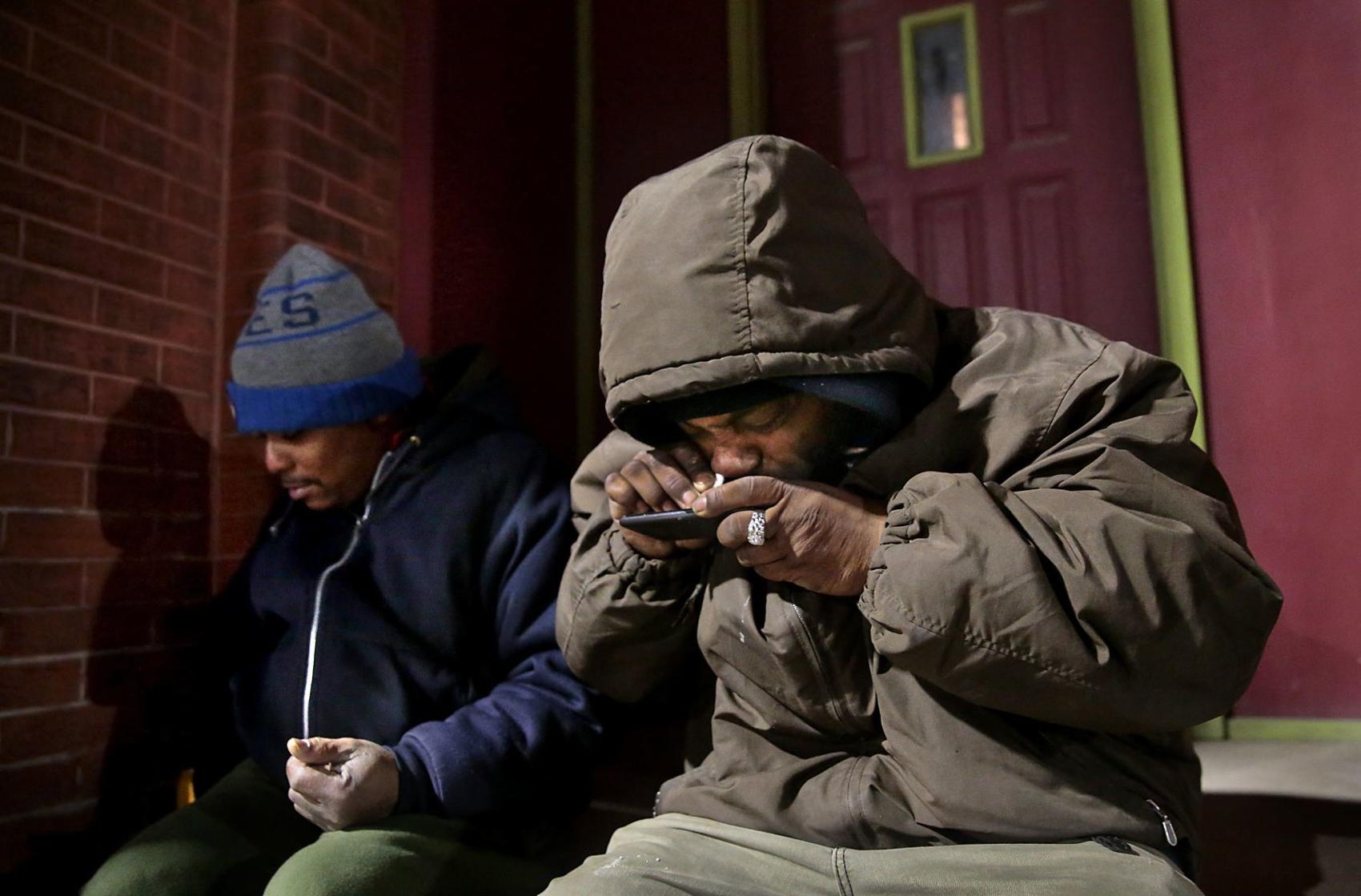
ST. LOUIS − Dannie Brown was the youngest of eight children in a family raised in Baden, on the city’s far north side. He stayed in the neighborhood as an adult because it feels like home, even though he doesn’t have one anymore.
His parents died of natural causes. Brown faces a different fate. He’s been scraping away new layers of rock bottom over two decades of opioid addiction.
The mother of his two grown children gave up on him a long time ago. After his mother died a few years ago, he ended up with his childhood home on Orchid Avenue. But he lost that, too, and no longer has a phone or wallet.
“I have a new respect for homeless people because I don’t know how they do it,” said Brown, 41. “Homeless and a dope habit. That is too much for one person to deal with.”
While he’s had a long decline, this is the first time he’s spent the winter in abandoned homes. There are many to choose from in Baden. Generations of disinvestment have left dilapidated structures along the North Broadway corridor that are fertile ground for drugs and prostitution.
Most mornings, Brown meanders to a thrift store at the heart of the beleaguered neighborhood. He wrestles used furniture to the curb and hustles tips from infrequent shoppers.
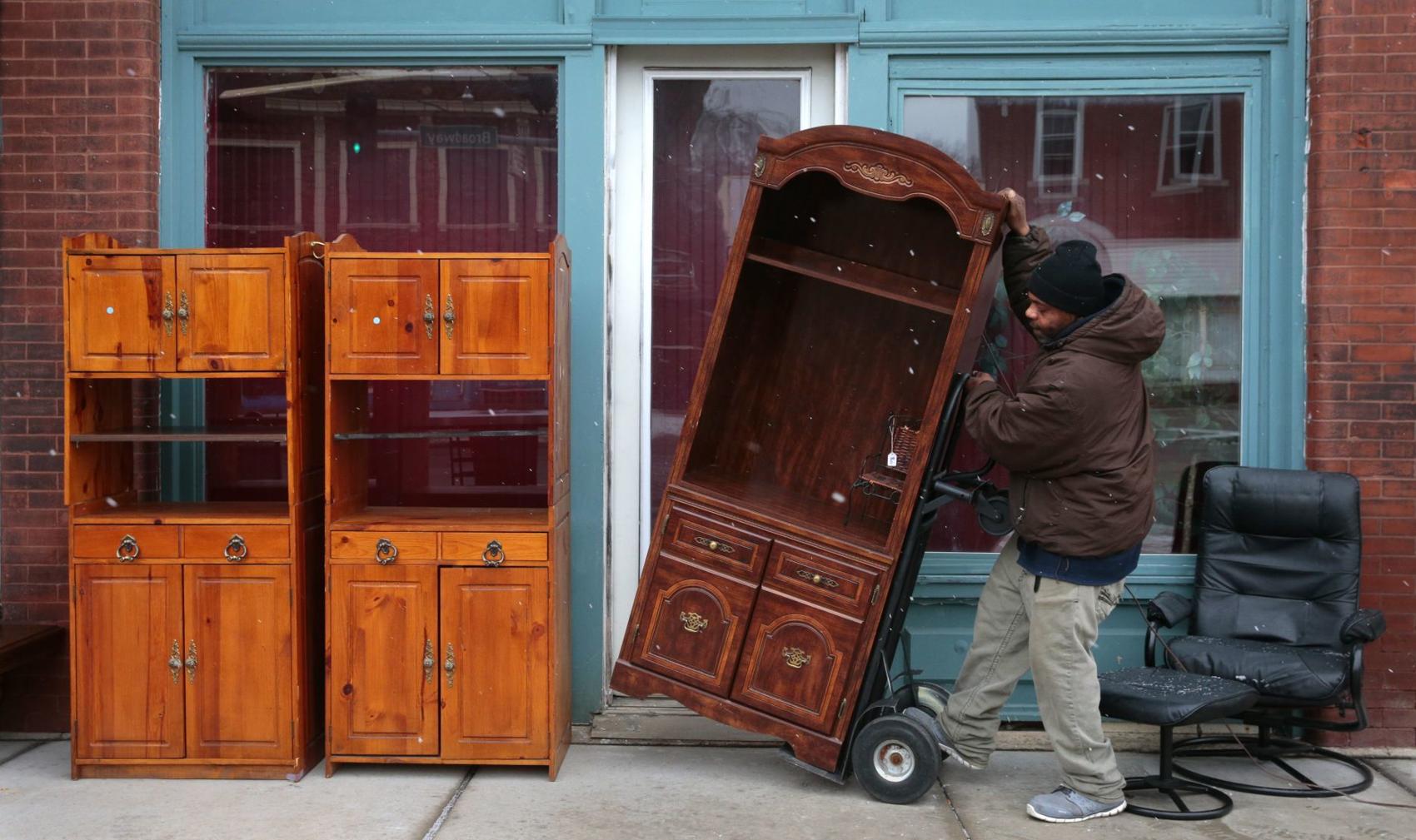
It doesn’t take much generosity. Heroin sells for $5 a capsule, $10 for three. And with fentanyl, the synthetic opioid that has flooded the market and killed so many people, especially African Americans like him, there’s always a more powerful option to take his painful withdrawal symptoms away.
It’s just that the relief doesn’t last as long. And the more opioids he needs, the less money he has to spend on survival. The more he snorts up his nose, the more risk he runs of hitting a lethal dose. Purity levels on the street vary widely and wildly.
“I need help, man. Bad,” Brown said. “I am tired of living this way.”
Heroin has been consumed in African American neighborhoods in St. Louis for many years, which, to the dismay of residents, was originally seen as a public safety issue. Once the epidemic spread into the white suburbs and rural areas it became recognized as a public health crisis.
Well into the epidemic, though, whites and blacks are still dying by the thousands. But the disparity between the two has become alarmingly high in Missouri, where the rate of African American men dying of overdose more than doubled between 2015 and 2018 while the rate for white men rose slightly. By 2018, African American men were nearly three times as likely to die as white men.
Officials say the eastern half of the state, particularly the St. Louis region, is driving the disparity. In 2018, the last full year of official data, opioid-related deaths among white males in the city fell 5%, compared to a 50% increase for black males.
SOURCE: Missouri Department of Health and Senior Services
data
share
There are numerous theories about what’s causing the black-white disparity. One theory points to the scarcity of state-funded treatment and recovery resources in African American areas of the city and north St. Louis County; there are three that treat patients for opioid use disorder. Others point to deep-seated racism, a dearth of community stakeholders in policy decisions, more exposure to white powder fentanyl, and high rates of uninsured residents.
“You don’t need a doctor to get heroin,” said Steven Marcus, 39, a clerk at the Broadway Meat Market, across from a vacant and forgotten medical center in Baden.
On the opposite side of the city, at 4022 South Broadway, the MoNetwork gives out free naloxone, the overdose-reversing drug, to anybody who wants it and offers other walk-in services. There isn’t an equivalent in north St. Louis.
As part of a $65 million state opioid response grant, Kanika Turner goes to black churches to help distribute naloxone in north St. Louis and educate people how to use it and access treatment.
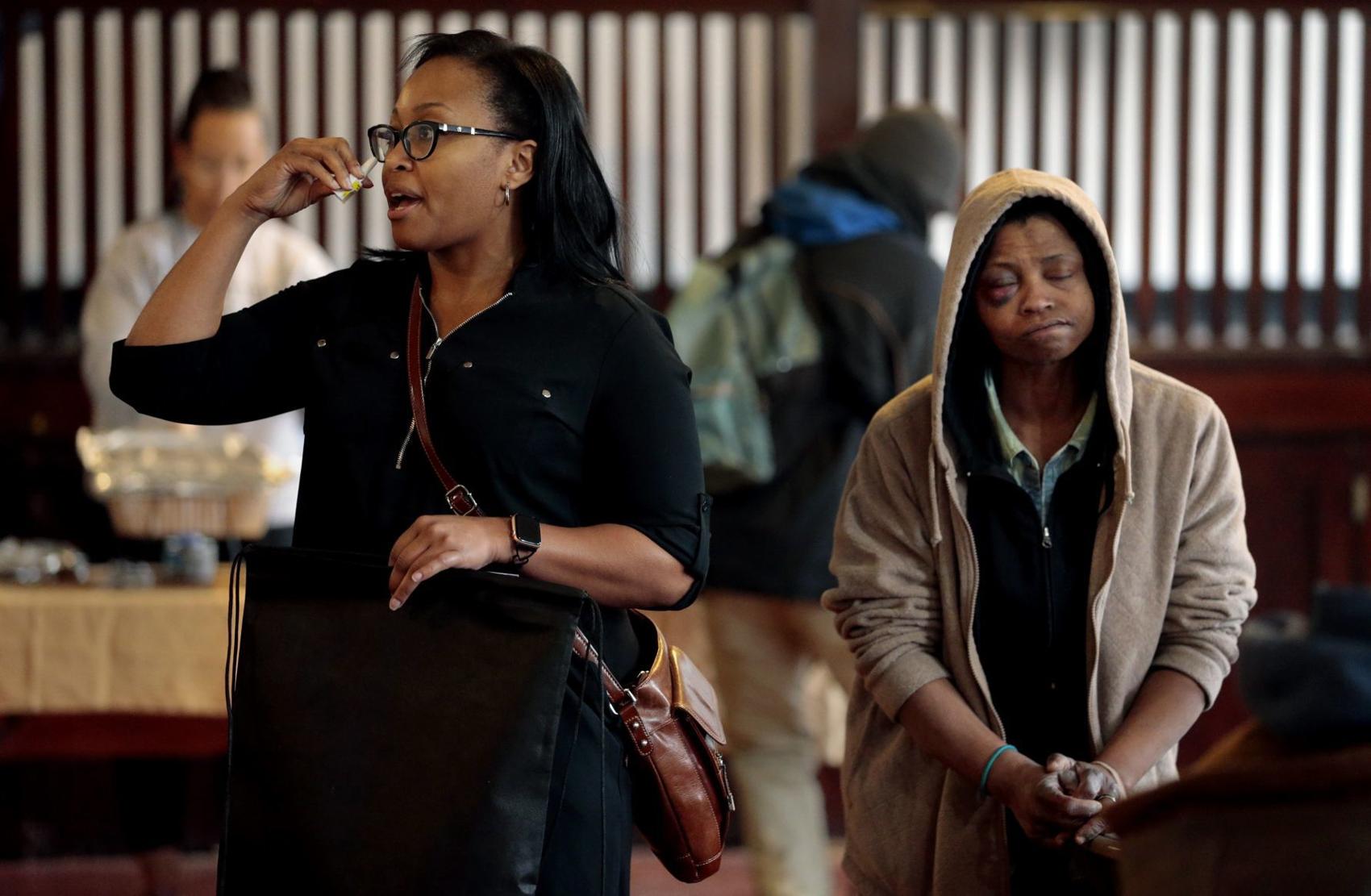
Dr. Kanika Turner, a physician at Family Care Health Centers, demonstrates the use of Narcan to save people who overdose during a prayer breakfast at St. John's United Church of Christ in the Fairground neighborhood on Saturday, Feb. 8, 2020. Turner handed out boxes of the drug to homeless people from the neighborhood who attended the breakfast. Many have already used the nasal spray to save friends. Photo by Robert Cohen, rcohen@post-dispatch.com
Robert Cohen“If we have lifesaving medications available, why should they have to die at a higher rate?” Turner, also a physician at Family Care Health Centers in Carondelet, said of the disparity.
She said the black community needs to be “flooded” with naloxone.
“I still hear stories of people using mustard to reverse an overdose,” she said. “Or using normal saline to inject into somebody’s veins. Or putting people into bathtubs full of ice. Or hitting, kicking, slapping people. These are myths that have been created in the community for survival.”
She said opioid use disorder is a chronic disease that has to be properly treated.
“I just don’t believe in giving up on people,” she said. “As long as you are alive, there is always hope.”
Brown leans on wisdom from years of drug use to detect risk. Heroin is gray or tan, he said, while fentanyl is cocaine white. His analysis doesn’t always work. Paramedics have had to revive him. He usually keeps naloxone spray in his front pocket, but he ran out.
“I’ve been trying to load up on it,” he said.
He recently used his last dosage on his nephew. The nephew’s mother said by telephone that the overdose scared her son out of using again. Brown said he has also tried to talk him out of it.
“He kind of agreed with me,” Brown said.
There’s no choice left for Brown. After the first month of using, he said, he’s always needed opioids in his system.
“I don’t want to need a drug,” he said. “It’s like I have diabetes and need insulin every day.”
He made a New Year’s resolution to stop. He said he really wants to quit this time.
“You can’t do it for nobody else but you,” he said. “Not your wife. Not your kids. Or it won’t work. Right now, I am fed up. I am ready to check myself into some rehab or something. I don’t have no insurance or nothing like that. I don’t even have ID. Somebody stole my wallet.”
Other than quitting cold turkey, which Brown said he’d rather die than try again, there are three medical pharmaceutical drugs to treat opioid addiction. Methadone and buprenorphine relieve withdrawal symptoms and reduce cravings by targeting brain receptors with a controlled dose of opioid. Naltrexone, which requires detox, blocks brain receptors from getting high.
Brown has had or sought out all three.
When he failed a drug test while on probation, he was given Vivitrol, a shot of extended release naltrexone that lasts one month.
“That was the best I did in a long time,” he said. “I wish I could have gone back and gotten another shot.”
He came off probation soon after and couldn’t afford the $1,000 cost of another injection. He wasn’t aware of daily naltrexone pills, which are $2, although adherence is poor.
Brown said he bought buprenorphine in the street but his addiction was too overpowering. He said he scored a dose of methadone that made him feel well for a few days. He said he pursued treatment at the West End Clinic, a methadone clinic, in the nearby Walnut Park East neighborhood, but he couldn’t get in.
He said he would flat out run to a methadone clinic that opened the door for him.
A steady stream of clients show up at the West End Clinic, an unmarked building at 5736 West Florissant Avenue, to quickly drink their daily dose of cherry-flavored methadone and go on about their lives. Until the next day, when it’s time to come back.
Numerous patients there said the treatment was beneficial. They were laborers on the way to work. Mothers and fathers. Retirees and people with disabilities. One young man was trying to work his way out of homelessness. A woman already had.
“If I had known about methadone while I was homeless, I wouldn’t have been out there so long,” Kim Geymont, 58, said from a nearby bus stop, on her way back to her apartment in north city after getting treatment.
New people who want access are given a piece of paper at the front door. There’s a phone number to call and leave a message. The paper says you must have current identification and proof of income or a disability to qualify. Methadone is highly regulated because of its potential for misuse.
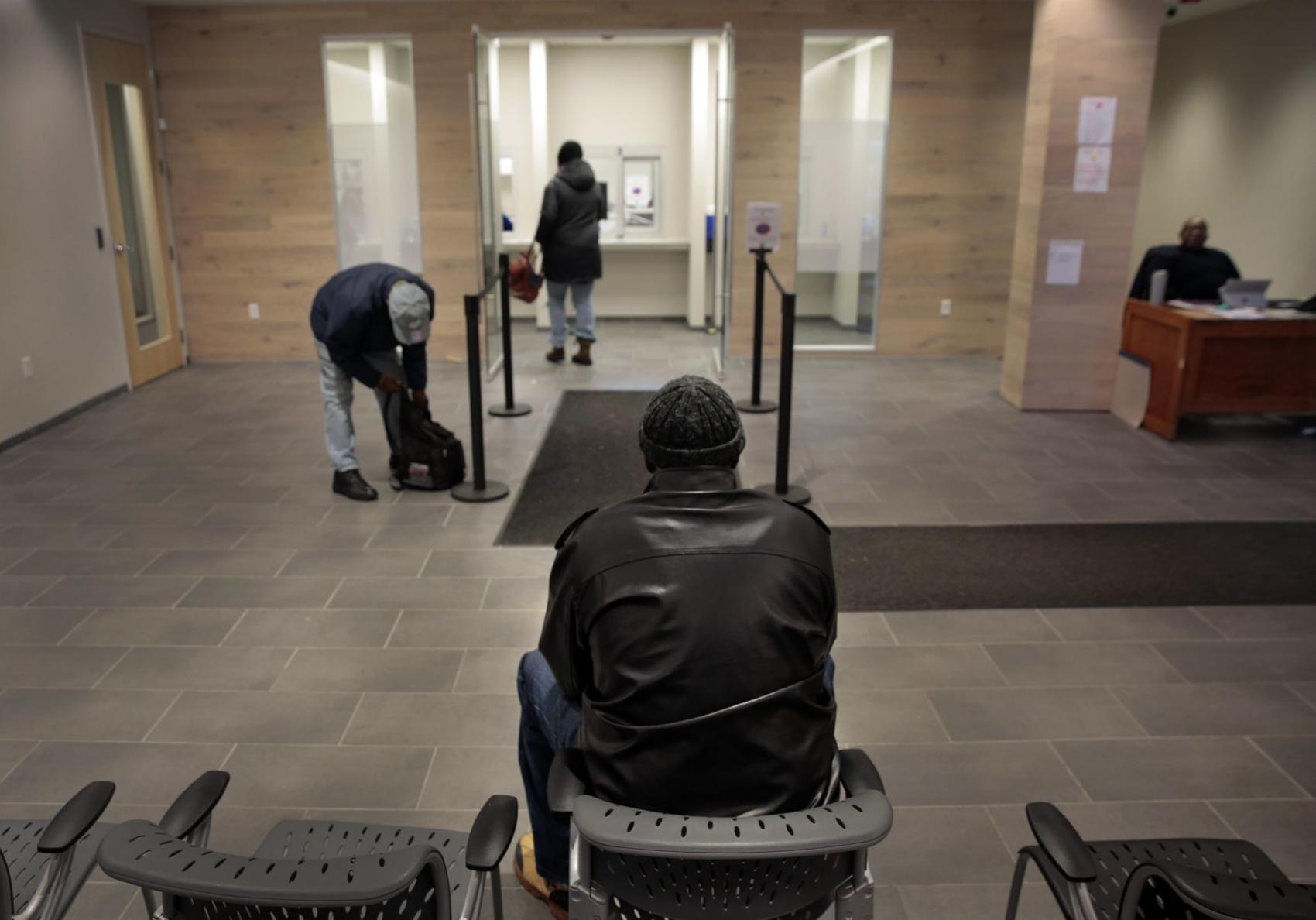
The clinic treats about 500 patients a day, some from as far away as Farmington. It doesn’t have the resources to follow up on all the calls for admission, let alone to go out and find people like Brown, said Wardell Carter, chief executive of the state-supported clinic.
“We could always use more funding,” he said. “Hopefully, Medicaid expansion passes.”
He said the clinic went out on its own to secure financing to expand the physical structure of the building. With the right financial support, the clinic might be able to serve up to 2,000 people a day, still far less, he said, than what the community needed.
As it is, Toni Bailey, 72, said it took a month and half for her 52-year-old son to be accepted. That was after checking with other programs.
“One thing for certain and two for sure, when you pick up a habit and you have great insurance, you can almost go to a spa like the Betty Ford clinic and get help,” said Bailey, sitting in the driver’s seat of a van while her son went inside for treatment. “Here in the city, there are waiting lists — waiting lists — for these people to get any help at all.”
Her son had been falling into a death spiral after getting out of prison. Since starting methadone on Jan. 23, she said he hasn’t been hanging out on the street. His appetite has increased. He’s sleeping better.
“Now his thought process is ‘I’ve got to get a job because I have a lot of making up to do,’” said Bailey, of the Hamilton Heights neighborhood.
Some of her other sons have also struggled with drugs. None of them has died from an overdose.
“Why God would spare mine as opposed to some other mom’s kids, I don’t know,” she said. “Some just don’t make it.”
Including those on methadone. A death notice recently hung in the West End Clinic for a 31-year-old patient.
Emergency responders have saved so many people from overdoses in the past few years that it’s become routine. A recent Friday afternoon call led the St. Louis Fire Department to the 5000 block of Wells Avenue.
Two men had dragged an unresponsive man out of a white Impala and dumped him on the front steps of his mother’s home in the Academy neighborhood. Paramedics gave him a shot of naloxone in the leg. After another shot, the man slowly came to his senses and was asked a series of questions.
Who is the president?
The paramedic said he’d come back to those.
“St. Louis, Missouri,” the man said.
As he refused to be taken to the hospital, his distraught mother laid into him.
“This is your second time!” she yelled at her 40-year-old son. “God isn’t going to give you three times! And then they just bring you and lay you out like you were a piece of trash!”
She said he was hurting her and that he should leave his friends.
“Time to grow up,” she said. “You are the oldest.”
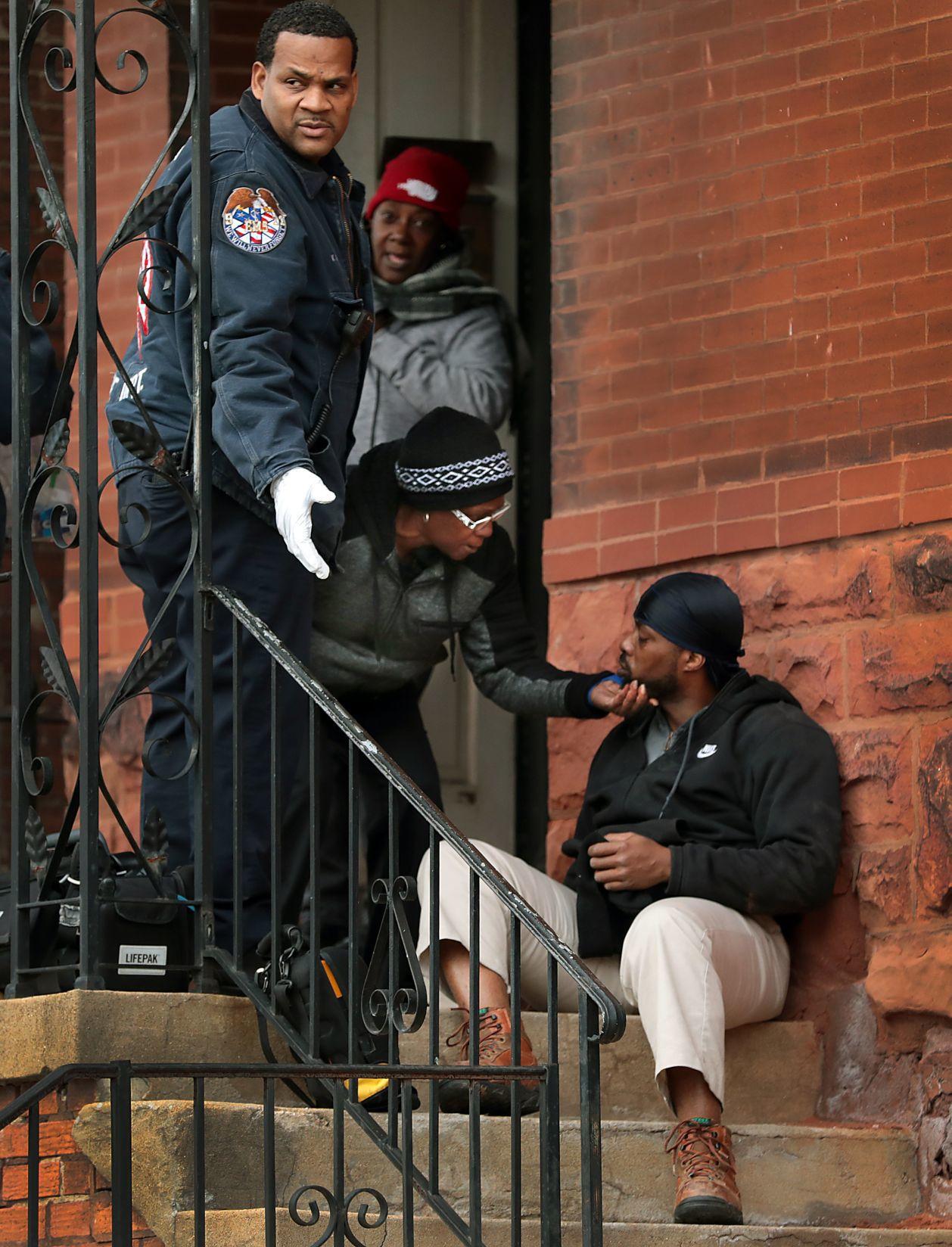
Vernita Patton, a neighbor who’d called 911, shook her head trying to understand it all. This was the second person she’d seen revived on the block in the past couple months. The last one was her 58-year-old niece. She said she has 15 nephews and as many as nine of them are on fentanyl.
“It’s not like it was in the ’60s when the hippies and all of that was out,” said Patton, 63, a home health nurse. “It’s way different from that now.”
To the north, in St. Louis County, Christian Hospital’s fleet of 22 ambulances has been seeing a high concentration of overdoses in the Jennings, Dellwood, Riverview and Spanish Lake areas since it started tracking the calls in recent years.
“The ones that are hardest on me to deal with is whenever their kids are home,” said Nick Miller, 29, who has responded to numerous overdoses.
“It’s not like they are wanting to end their life,” he added. “They want to get the best high possible and teeter on that edge of overdosing.”
Brown doesn’t do opioids to get high anymore. He said he does it so he can function. When he showed up at the thrift store in Baden around 9 a.m. on a recent morning, he was already feeling poorly and he had a long shift ahead. He’d last used at midnight to fall asleep.
“My body needs it,” he said. “Like right now. Working today. I need money to get my fix or else I’ll be messed up.”
By late morning, his legs were stiffening. He kept yawning. Each time, large tears ran down his face. He ducked away at lunchtime. Somebody gave him a tiny bit of fentanyl. He stopped yawning. His legs loosened up.
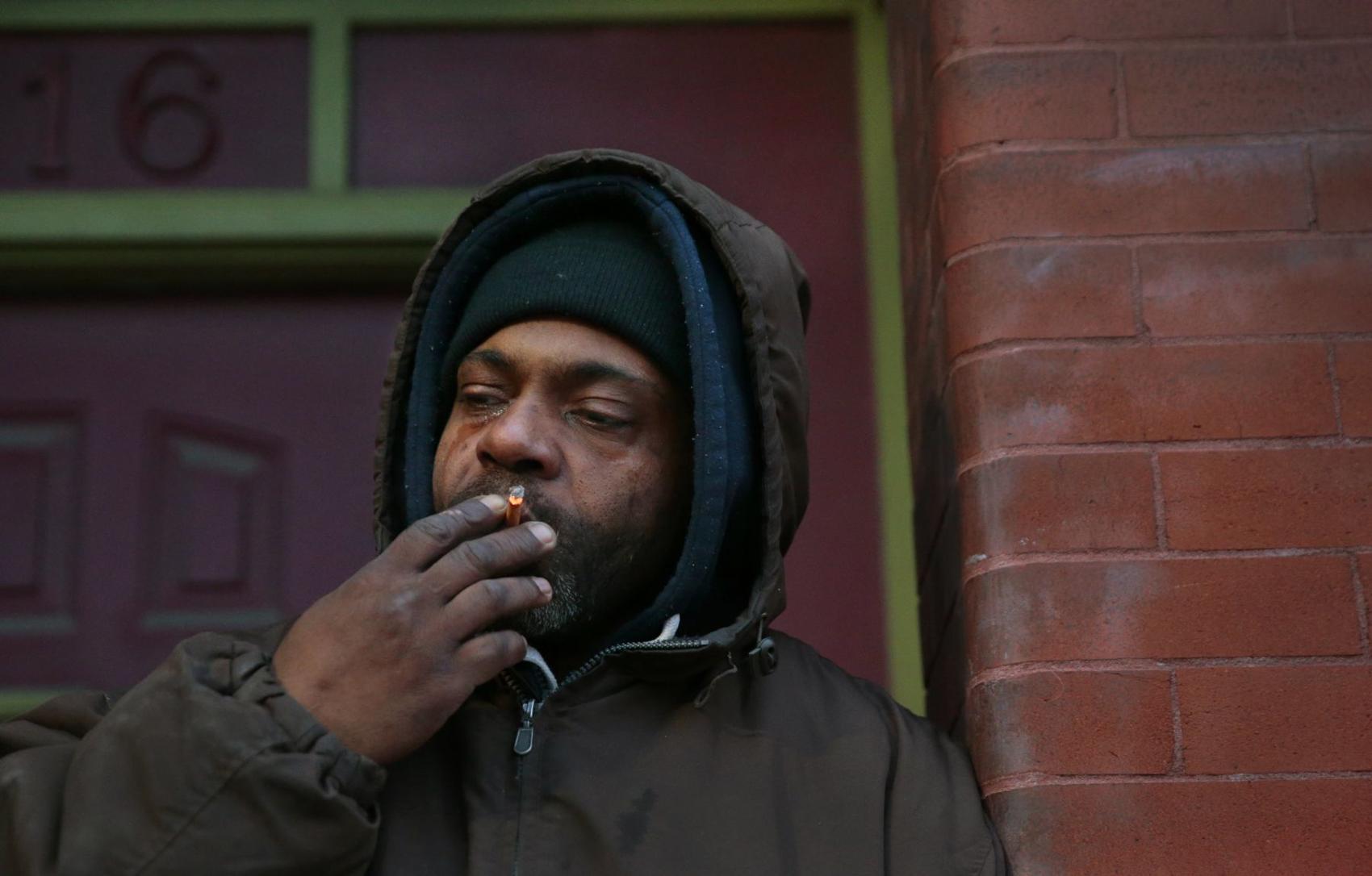
"I need this dope every day to function," said Dannie Brown, 41, as he takes a cigarette break while managing the tears streaming down his face that indicate opioid withdrawal symptoms on Thursday, Feb. 6, 2020. Brown works at a Baden thrift shop, spending most of his day on a neighboring stoop as he looks for tips helping customers.
Photo by Robert Cohen, rcohen@post-dispatch.com
Robert Cohen“It did a little something for me,” he said.
He saw the toll on himself and others. A man and woman walking by on the sidewalk looked like zombies.
“That girl, she used to be so pretty,” Brown said. “The drugs took over.”
The 21-year-old woman was from Arnold. The 41-year-old man was from Jennings. The man said they were waiting for a call to get into treatment together at Preferred Family Healthcare, a publicly funded program at 4066 Dunnica Avenue in south St. Louis that is usually booked.
As the afternoon wore on, Brown started to drag again. By 6 p.m., quitting time, he felt like he was going to throw up and have diarrhea at the same time.
Keith Minor, 44, walked up from his nearby apartment as Brown hauled the used furniture back inside the thrift store for the night.
“I’ve been battling this addiction thing probably 22 years,” he said. “The good thing is I am headed to Farmington tomorrow.”
Southeast Missouri Behavioral Health Aquinas Center sends a van to St. Louis most days. He planned to stay as an in-patient for weeks. His girlfriend was also in treatment at Queen of Peace Center, behind the Cathedral Basilica of St. Louis.
“It’s getting out of hand right now,” he said. “I wanted to be a role model for the kids, and it wasn’t going that way.”
Minor was disabled. He had a scar on his face from a fire he survived as a 6-year-old. He said the fire burned over half his body. He said he’s been diagnosed with manic depression and post-traumatic stress disorder. He’s been through various forms of drug treatment, including the West End Clinic. He doesn’t want to be on methadone.
“I don’t want to be on anything,” he said. “I have to stand up and be a man and do this. I have so many problems. Those problems create more problems.”
But hours before the morning pickup for treatment in Farmington, Minor sat on a stoop with Brown. Cars passed by on North Broadway.
Brown spent the $25 he earned at the thrift store on heroin. He broke off a piece and spread it out on the cracked screen of Minor’s cellphone. They took turns snorting the drugs.
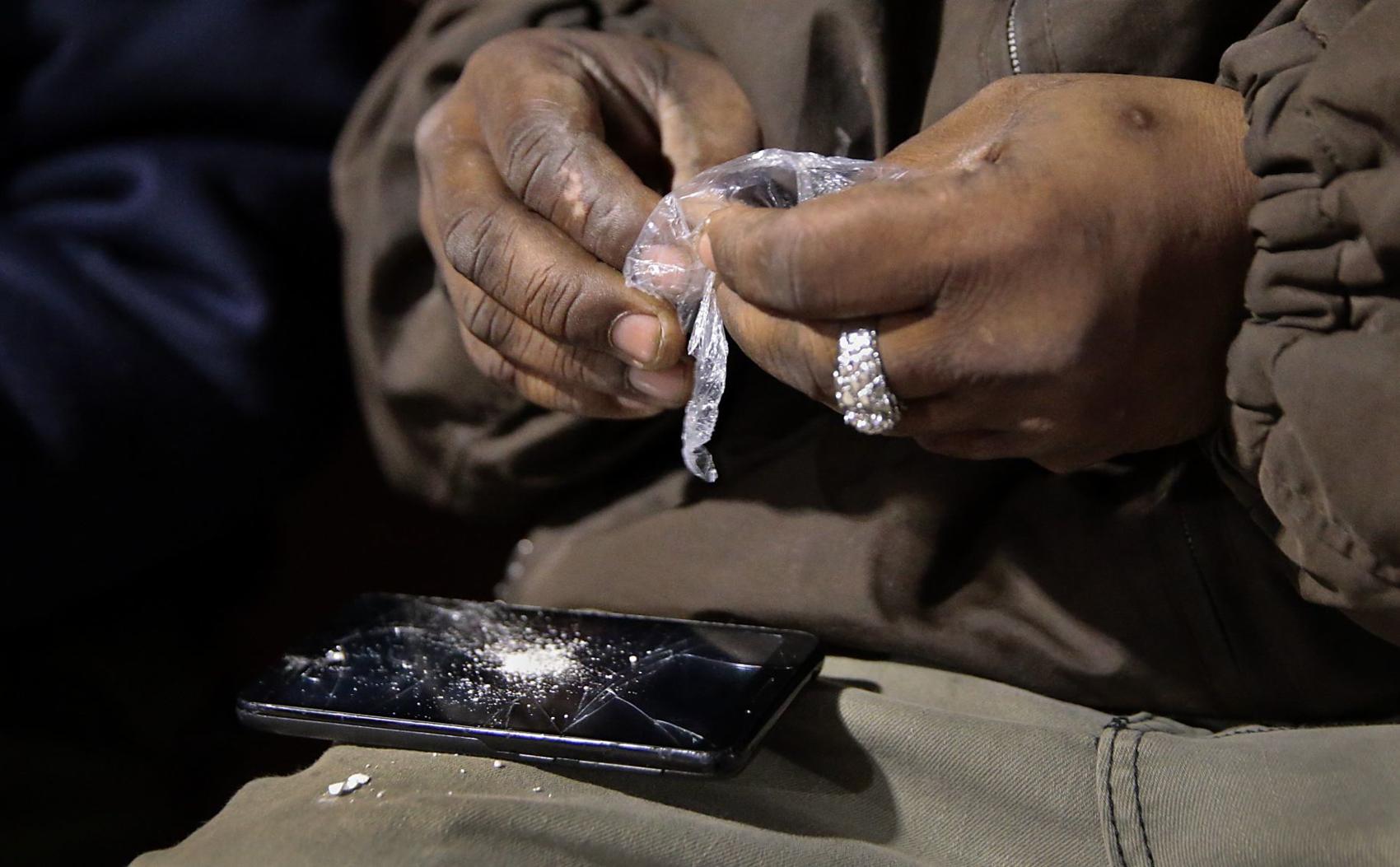
“I feel normal,” said Brown.
Talk turned to Minor’s plan to go to treatment the next day.
As both departed in opposite directions, Brown bumped into the 41-year-old man from Jennings. Brown broke a small piece off for him and put the rest in the fold of his stocking cap.
The next day, Minor was on the van to Farmington, looking forward to recovering far from Baden. He’d last four days.
Brown didn’t show up for work in the morning. He eventually made it back. He needed to make more money to buy more heroin. And if he couldn’t get that, he could easily get fentanyl to keep his sickness at bay.
By the end of the year, he said he hopes to be alive and off drugs. He hopes to have his childhood home back before another winter.
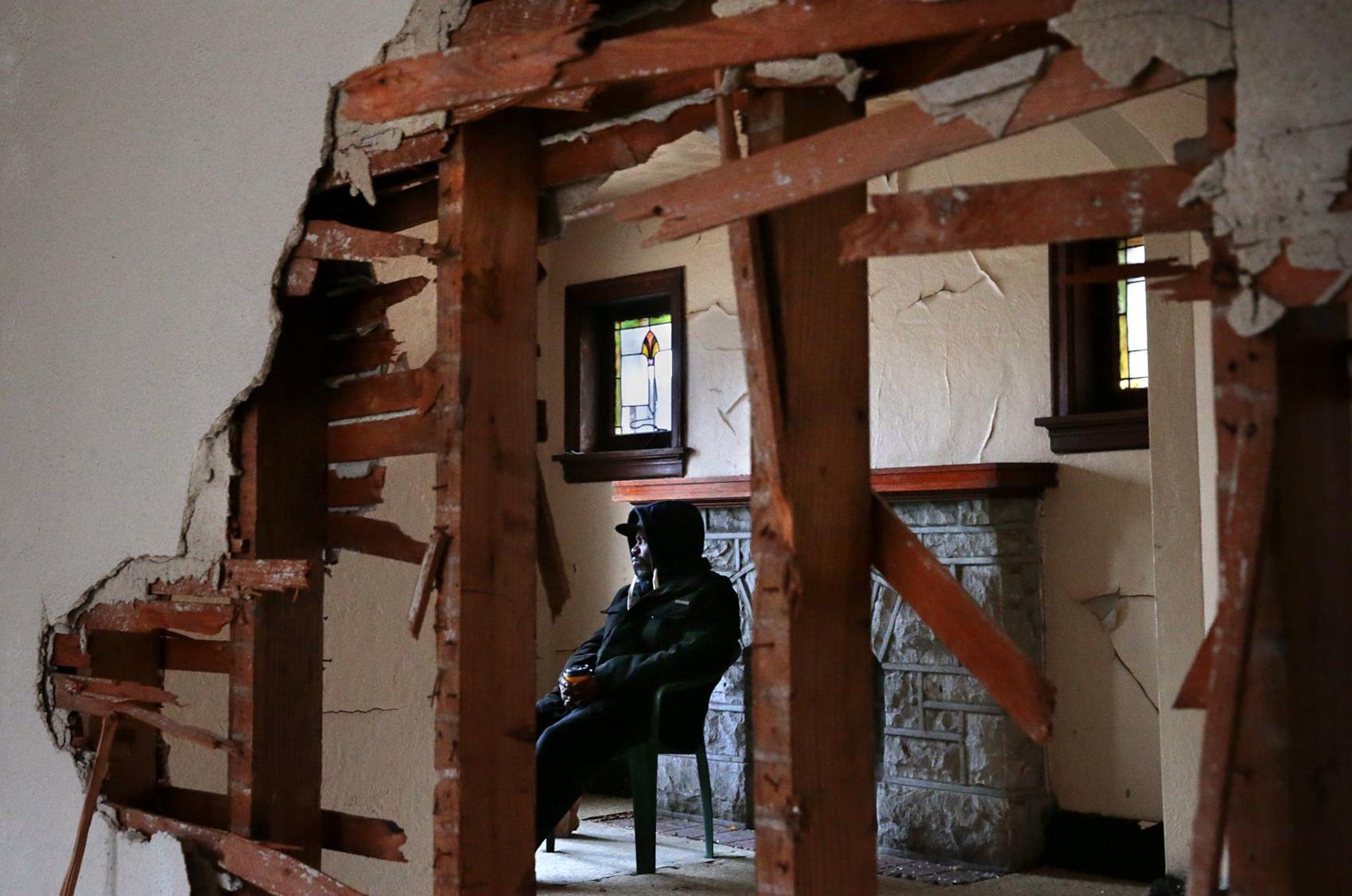

 Pathways Drug Rehabilitation Luxury Addiction Treatment & Detox Center
Pathways Drug Rehabilitation Luxury Addiction Treatment & Detox Center


